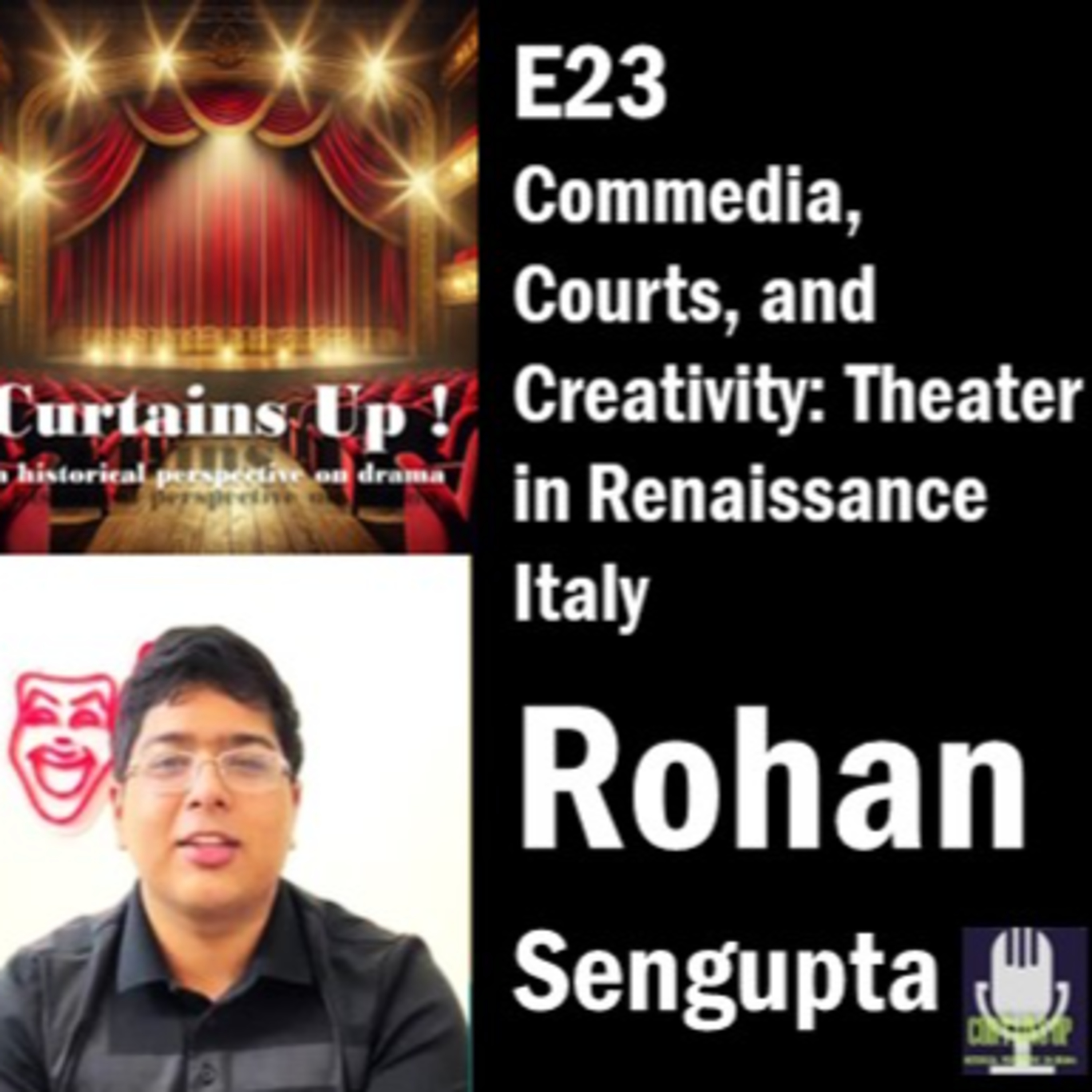Curtains up! A Historical Perspective on Drama.

Curtains up! A Historical Perspective on Drama.
Podcast Description
Step backstage with me on Curtains Up! the podcast that uncovers the rich, dramatic stories behind the evolution of theater. From the divine rituals of ancient Greece to Shakespearean intrigue, and from the glitz of Broadway to the rise of modern experimental theater, Curtains Up! explores how drama has shaped culture and society across centuries. Perfect for theater lovers, history buffs, and anyone curious about the art that mirrors our humanity. Join me for captivating episodes, exclusive interviews, and behind-the-scenes insights into the world’s greatest stories ever performed.
Podcast Insights
Content Themes
This podcast delves into a range of topics such as theater superstitions, the evolution of drama from ancient Greece to modern practices, and the intersection of dance and storytelling in various cultures, with episodes covering the history behind the phrase 'break a leg,' a detailed exploration of Kathak dance with Ms. Chandrayee, and the significance of Sanskrit drama in episode three.

Step backstage with me on Curtains Up! the podcast that uncovers the rich, dramatic stories behind the evolution of theater. From the divine rituals of ancient Greece to Shakespearean intrigue, and from the glitz of Broadway to the rise of modern experimental theater, Curtains Up! explores how drama has shaped culture and society across centuries. Perfect for theater lovers, history buffs, and anyone curious about the art that mirrors our humanity. Join me for captivating episodes, exclusive interviews, and behind-the-scenes insights into the world’s greatest stories ever performed.
Summary
In this episode of Curtains Up, host Rohan explores the vibrant world of Commedia dell’Arte, a revolutionary form of street theater that emerged during the Renaissance. He discusses its origins, key characteristics, and the influence of stock characters on modern comedy. The episode also delves into the famous play ‘The Servant of Two Masters’ by Carlo Goldoni, highlighting its improvisational elements and comedic misunderstandings.
Takeaways
- Commedia was an important art form for being unique in the sense that it was mostly improv.
- The evolution of Renaissance theatre saw a shift from religious to secular themes.
- Commedia actors trained in exaggerated physicality, mime, and acrobatics.
- The Servant of Two Masters incorporates key elements of Commedia.
- Stock characters like Harlequin and Pantalone are unforgettable.
- Commedia democratized theater by bringing it to the streets.
- Improvisation is central to Commedia performances.
- Each actor specialized in a stock character for their entire career.
- The play is known for its physical humor and fast-paced dialogue.
- Improvisation can add depth to a narrative-driven structure.
Titles
Unmasking Commedia dell’Arte
The Evolution of Renaissance Theatre
Sound bites
“The original slapstick.”
“It democratized theater.”
“Comedietal art didn’t just entertain.”
Keywords
Commedia dell’Arte, Renaissance theatre, improvisation, stock characters, physical comedy, The Servant of Two Masters, Carlo Goldoni, Italian theatre, theatrical history, comedy

Disclaimer
This podcast’s information is provided for general reference and was obtained from publicly accessible sources. The Podcast Collaborative neither produces nor verifies the content, accuracy, or suitability of this podcast. Views and opinions belong solely to the podcast creators and guests.
For a complete disclaimer, please see our Full Disclaimer on the archive page. The Podcast Collaborative bears no responsibility for the podcast’s themes, language, or overall content. Listener discretion is advised. Read our Terms of Use and Privacy Policy for more details.